Peru: A Journey In Time – British Museum, London
A review of Peru: A Journey In Time, now on at the British Museum. A quietly excellent exhibition which reveals a lot about Peru’s past cultures and the threads of continuity with the present.
Peru And My Personal Bucket List
I don’t want to say I had been doom-mongering. BUT – it is true that I recently looked at my list of exhibitions I want to see, and made sure I had tickets sooner rather than later. Perhaps it was that this time last year we were in lockdown. Perhaps it was news of new variants. In either case, Peru: A Journey In Time was close to the top of my list. And I’m glad I went to see it.
The reason I was so interested in this exhibition is also pandemic-related. In January 2020, I booked myself on a once-in-a-lifetime trip to Peru to go to Machu Picchu via the Inca Trail. I’m still waiting – fingers crossed please everyone for May 2022! But anyway, this makes the British Museum’s current exhibition a nice stand-in. A chance to learn more about Peruvian cultures, crafts and customs from London.
The exhibition combines artefacts from two main sources. Firstly, it draws heavily on the British Museum’s own collection. There are also important loans from Peruvian museums, including the Museo de Arte de Lima and Museo Kuntur Wasi. Even a traveller to Peru would likely not have time to visit all these museum highlights, so this feels like a very special opportunity to explore Peruvian cultures, via outstanding objects gathered together for our convenience.
Peru: A Journey In Time
The exhibition coincides with the bicentenary of Peruvian independence from Spanish rule. This exhibition is not really about modern Peru, however, but about the cultures that have left their mark on the modern state (and our imaginations). The curators take us through different cultures: the Nasca, Moche, Chavin, Inca. The idea is to explore, through societies that rose and faded away in relative independence from the rest of the world, what a successful society can look like. That many of these societies faced challenging conditions, whether through aridity, altitude, dispersion or invasion, could perhaps teach us something about overcoming our own challenges.
So far, so linear historic narrative. There is also another concept of time presented to the visitor, however. In this understanding, we are not so much on a journey through time, but a journey to rethink time. It isn’t particularly forceful, but there is a thread running through the exhibition of continuity; rather than the past and future being distant and remote, can we understand them as coexisting and constantly influencing one another? We see this idea surface when, for example, we watch short videos and see how the descendants of the people we are learning about have taken traditional techniques and reshaped them. Or when we look at colonial-era objects and see old motifs resurfacing and evolving. I appreciated this gentle effort to introduce non-Western concepts and systems of knowledge.
And gentle is a good way to describe Peru: A Journey In Time overall. It’s not a flashy, in your face exhibition. But it is quietly, unassumingly excellent. The works on display are top-notch. They perfectly illustrate the concepts under discussion. Landscape and intangible heritage are introduced through large-scale photography on the walls and an unobtrusive soundtrack. Young people are engaged through activities placed throughout the exhibition. It’s well thought out and well executed. And, for me, compared very favourably to the last thing I saw in this space.
Highlights of Peru: A Journey In Time
Between them, the Peruvian cultures presented in this exhibition are famous for having some of the best ceramics and textile traditions ever seen. So it’s no surprise that there are some absolutely incredible textile and ceramic artefacts on display here. There was a strong tradition of creating ritual vessels in Peru, and of realistic modelling in ceramics. So we can see objects that tell us about farming traditions, religious beliefs, warfare, dress, and more, all modelled in clay.
On the textile front many objects come from burials or mummy bundles. The techniques are exquisite and, as with the ceramics, there is a lot we can learn from them about daily life in these cultures. I particularly liked when textiles and ceramics came together. For example one display case contains two examples of hats, along with a ceramic vessel of a man wearing something almost identical. Each object increases our understanding of the other.
I have read a lot about Peru over the years (hence the bucket list trip), so there were other objects that I was excited to see. I liked seeing examples of khipu (an Inca system for transmitting information using knots) up close, for instance. And I find the codices of the early colonial period fascinating (last image above).
So if you have the opportunity, do go and see this exhibition for yourself. Try to pick a quiet time so you can take everything in and spend time with the objects. And let me know in the comments if it leads you to a new appreciation of historical change and continuity. Meanwhile, I will hope that a future in which I have had the opportunity to see some of these objects at home in Peru is in the cards!
Salterton Arts Review’s rating: 5/5
Peru: A Journey in Time on until 20 February 2022
If you see this after your page is loaded completely, leafletJS files are missing.

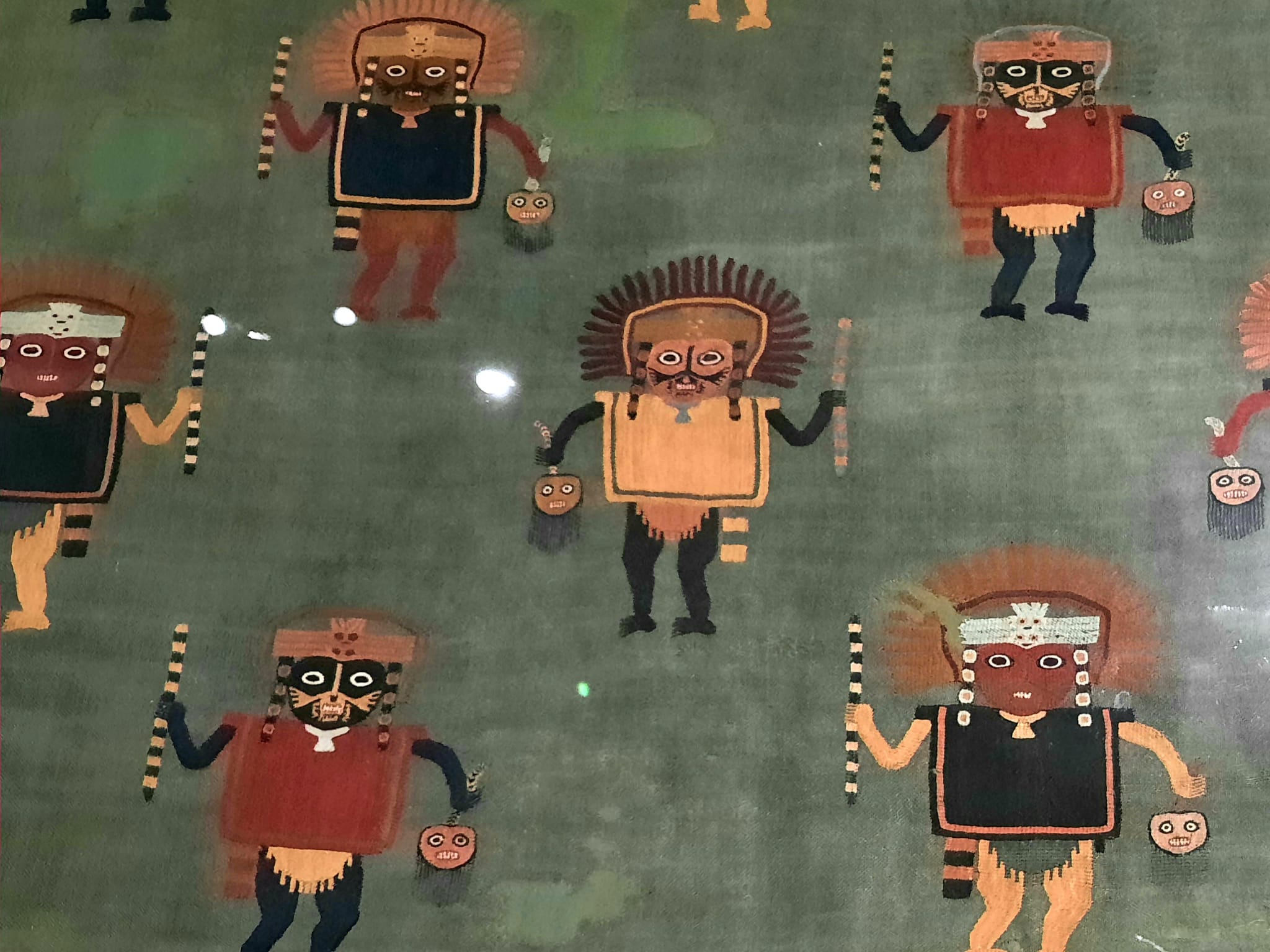
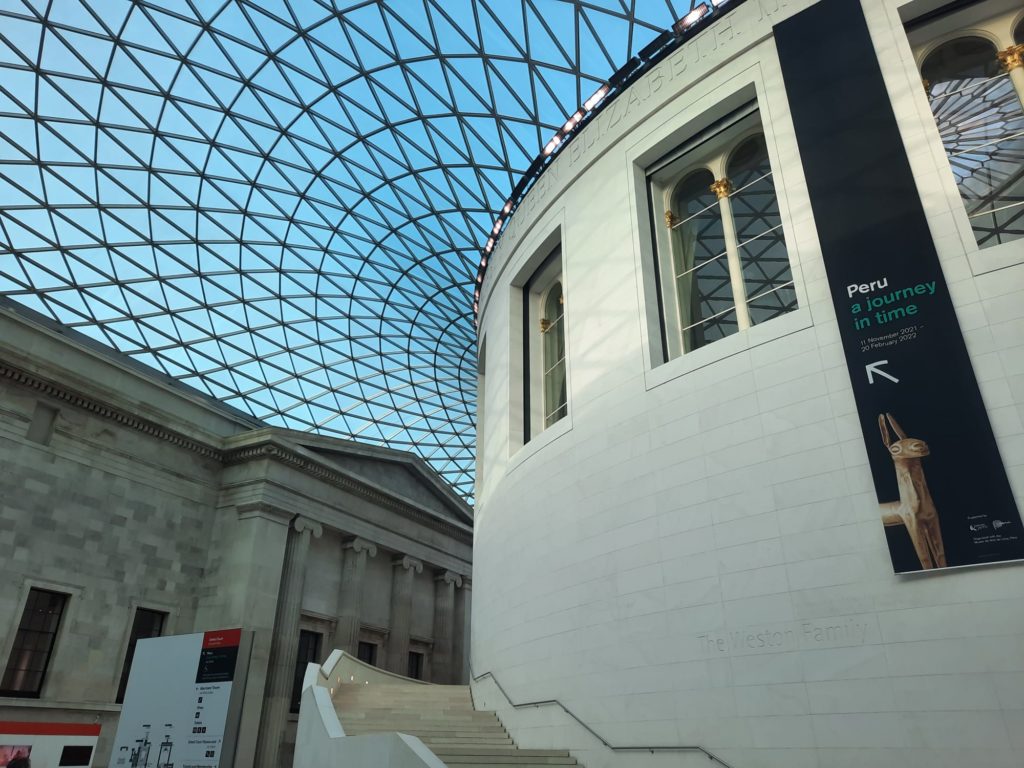
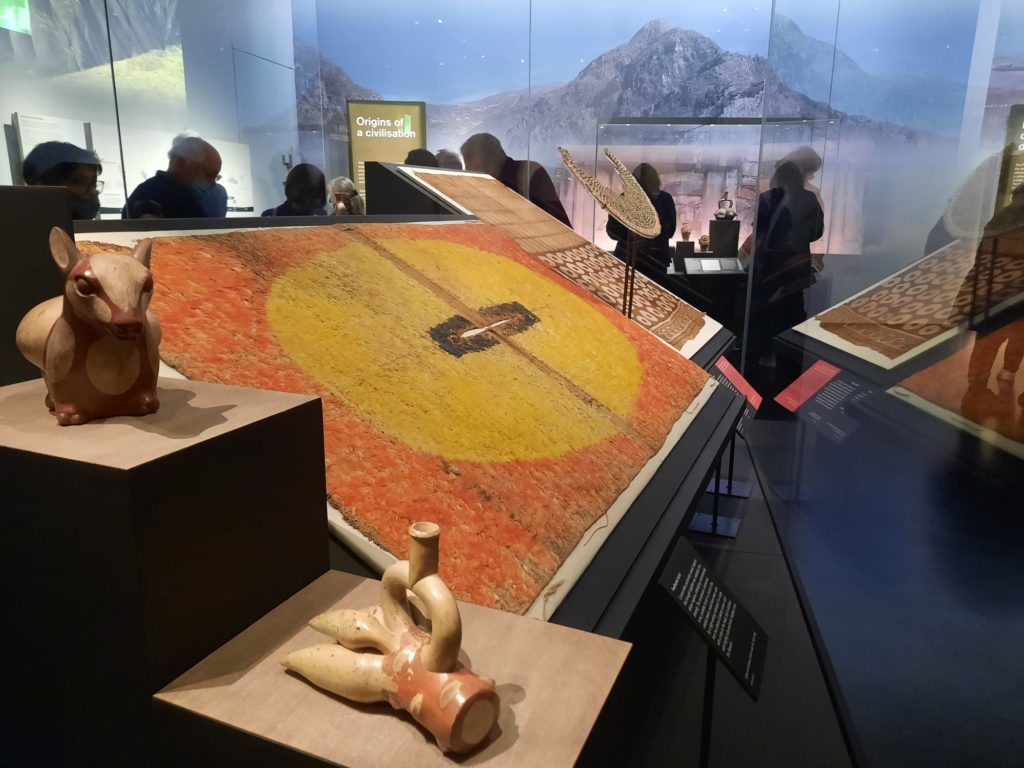

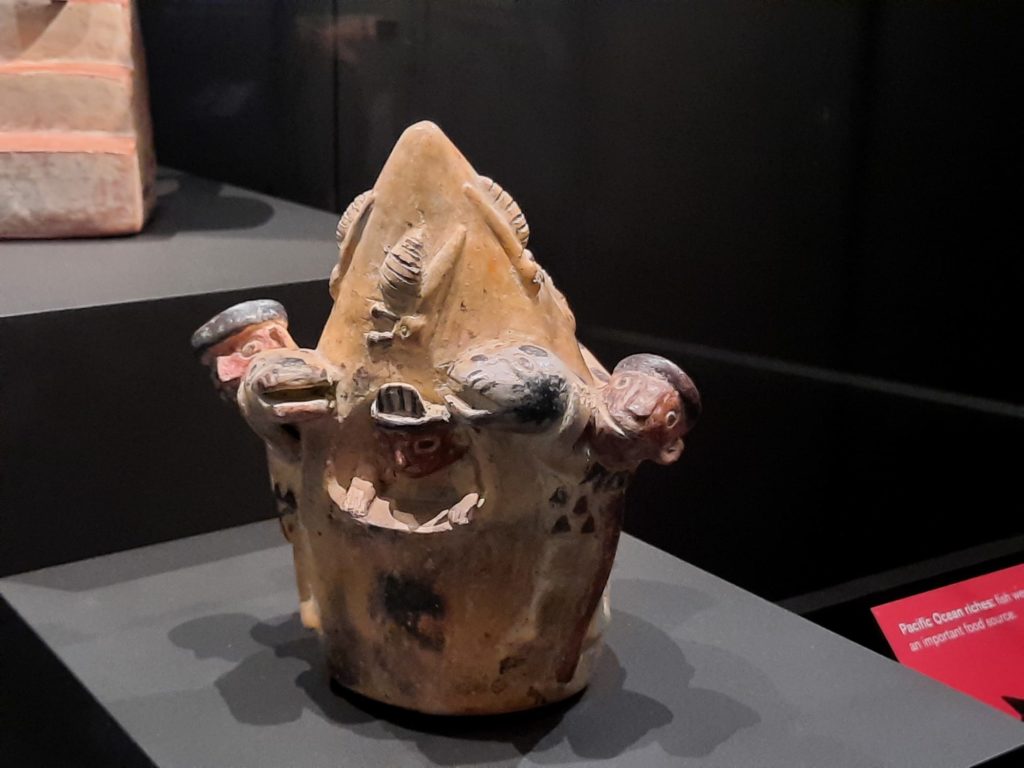

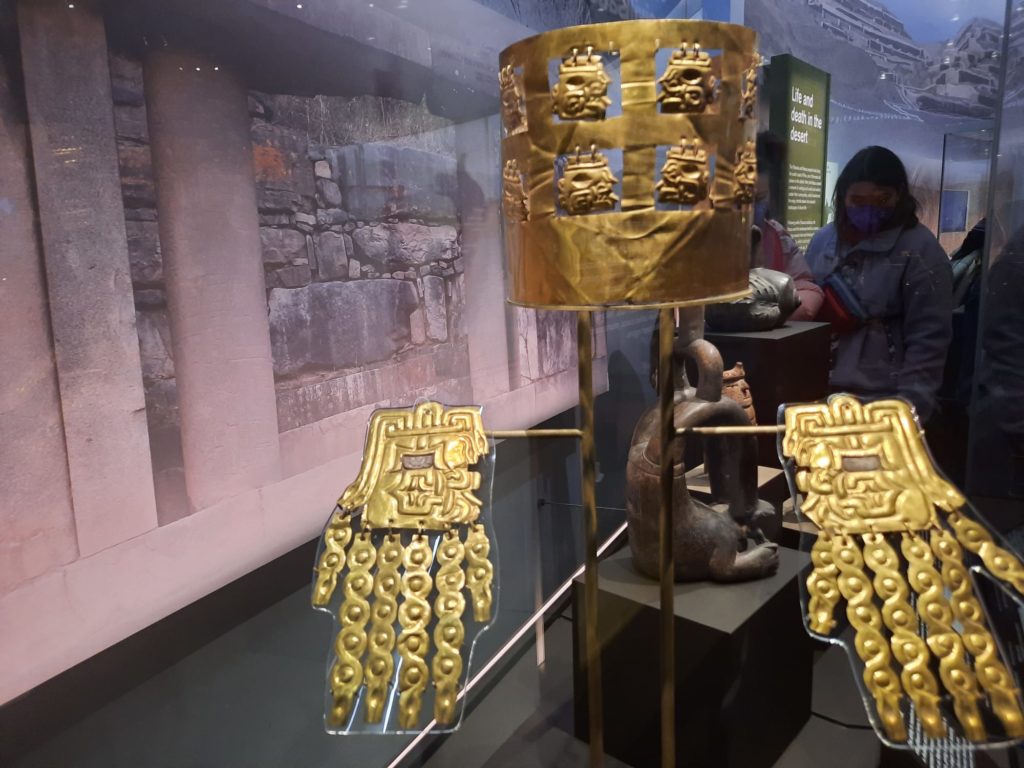
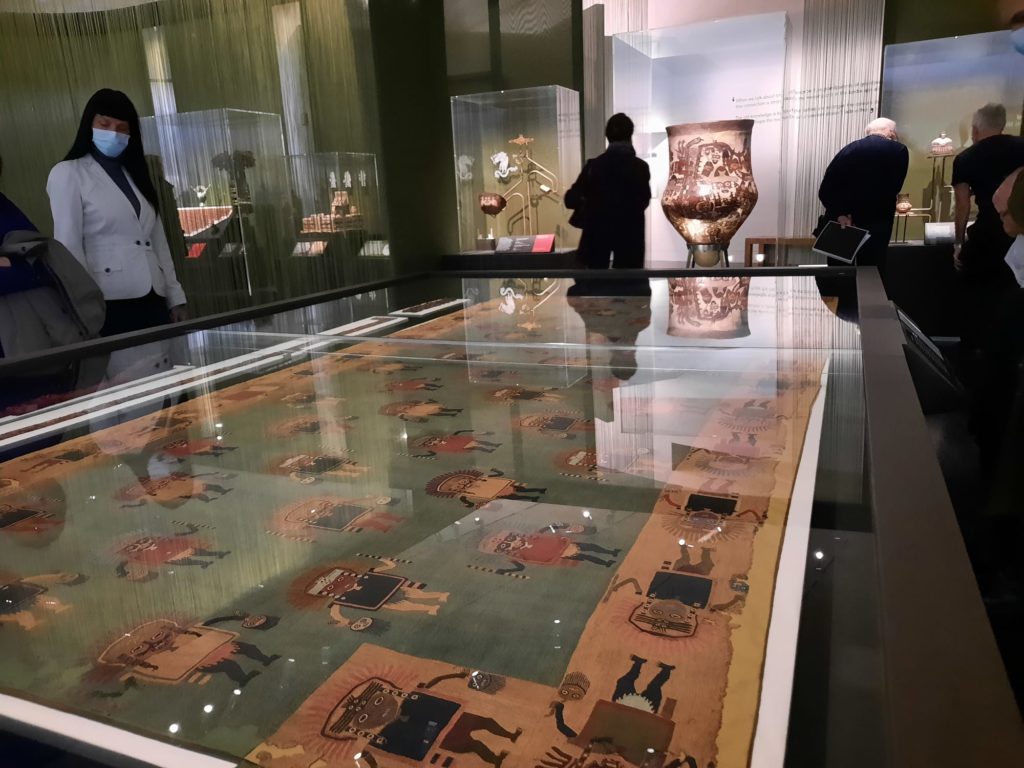

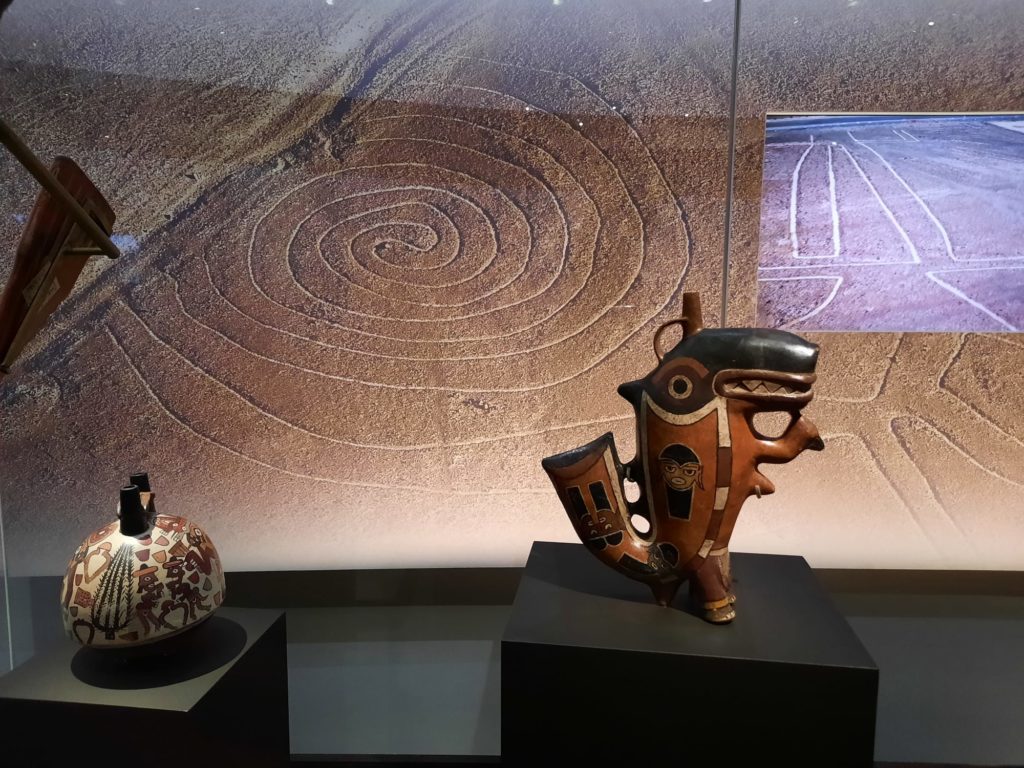
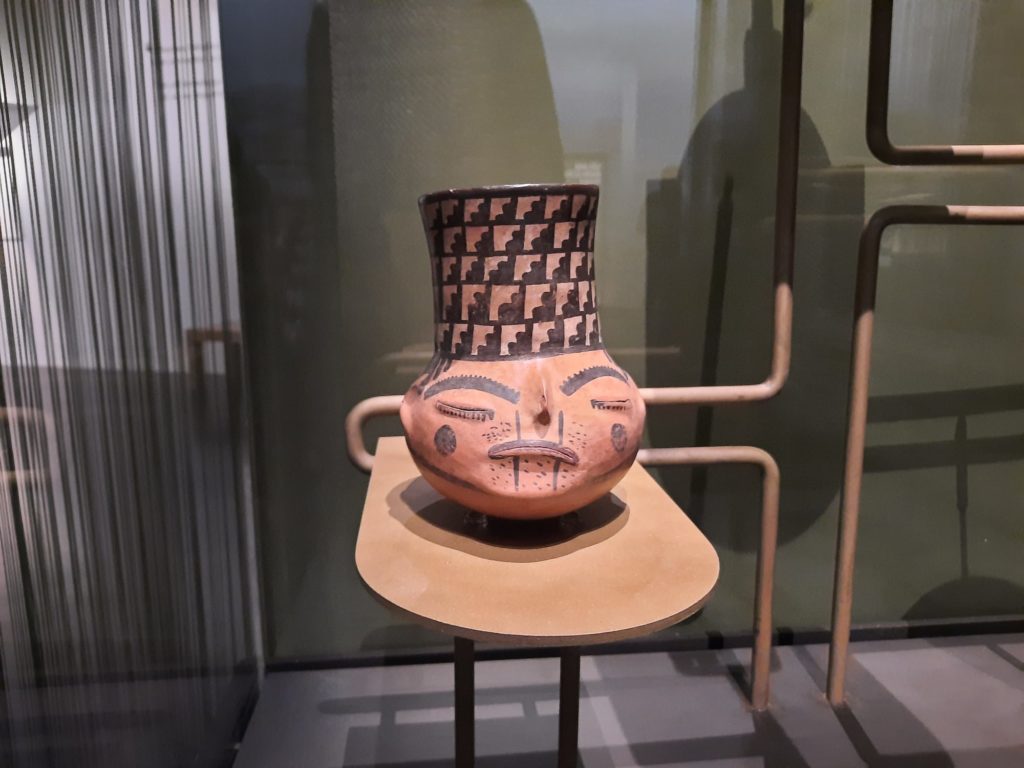


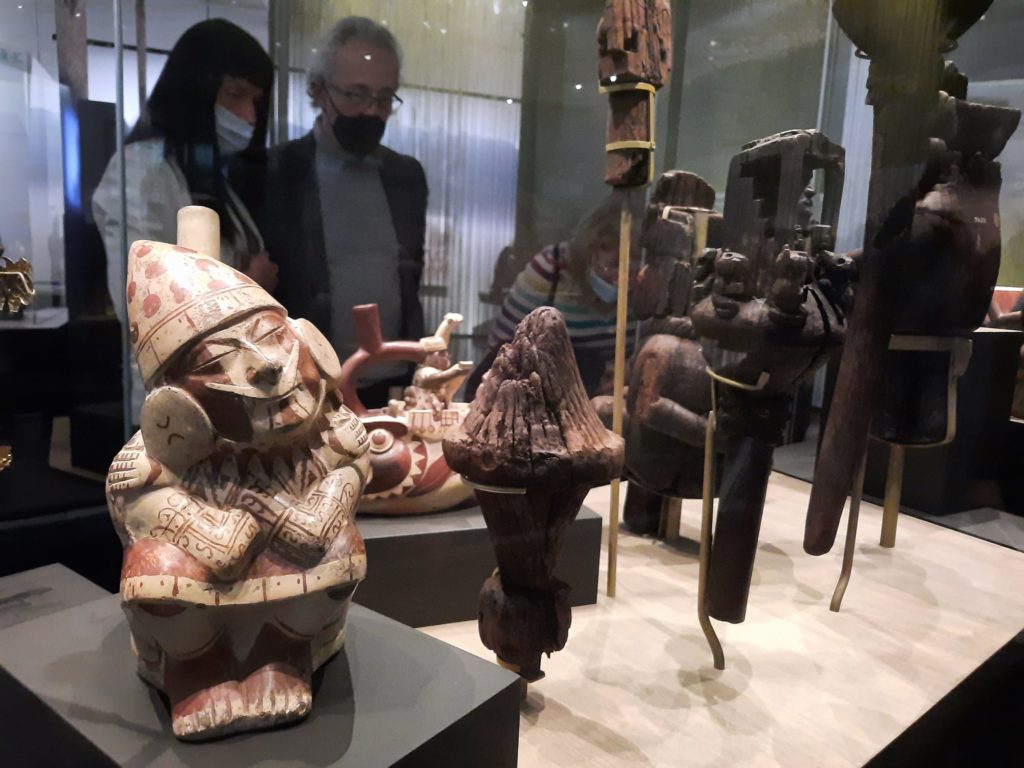

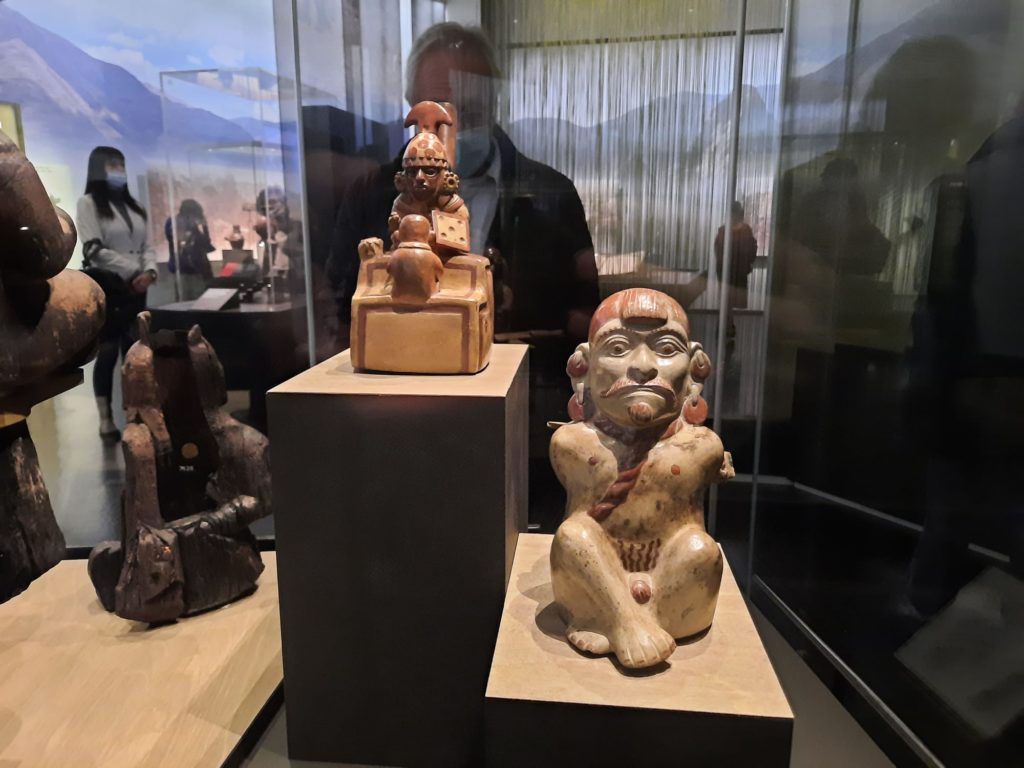
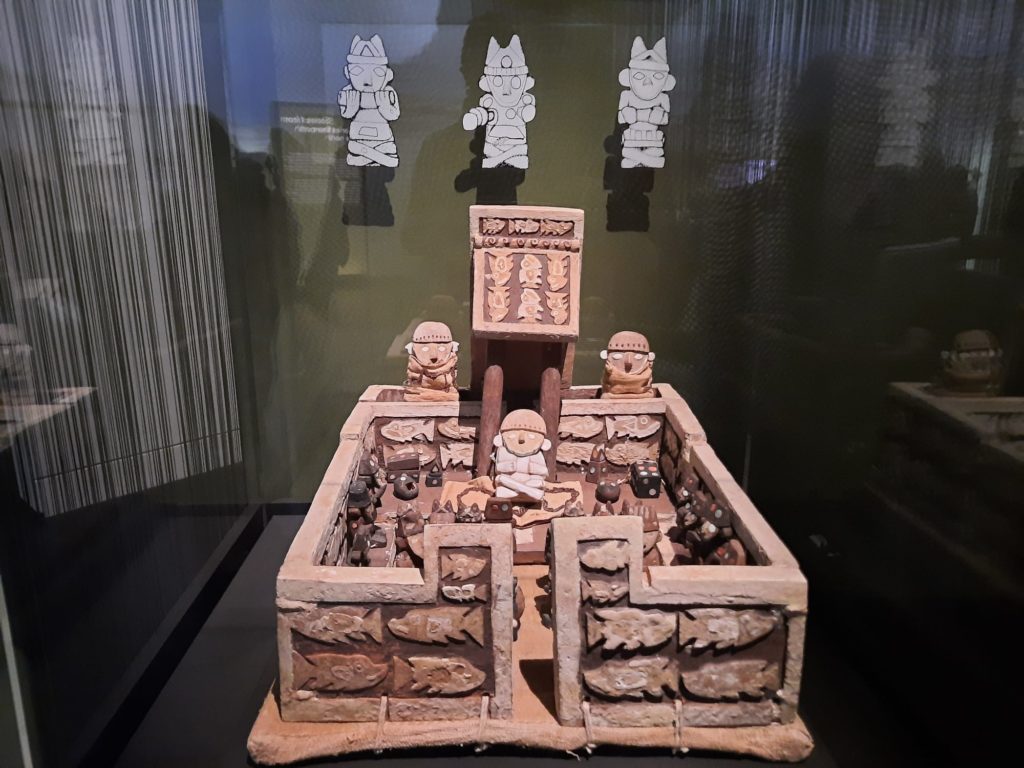
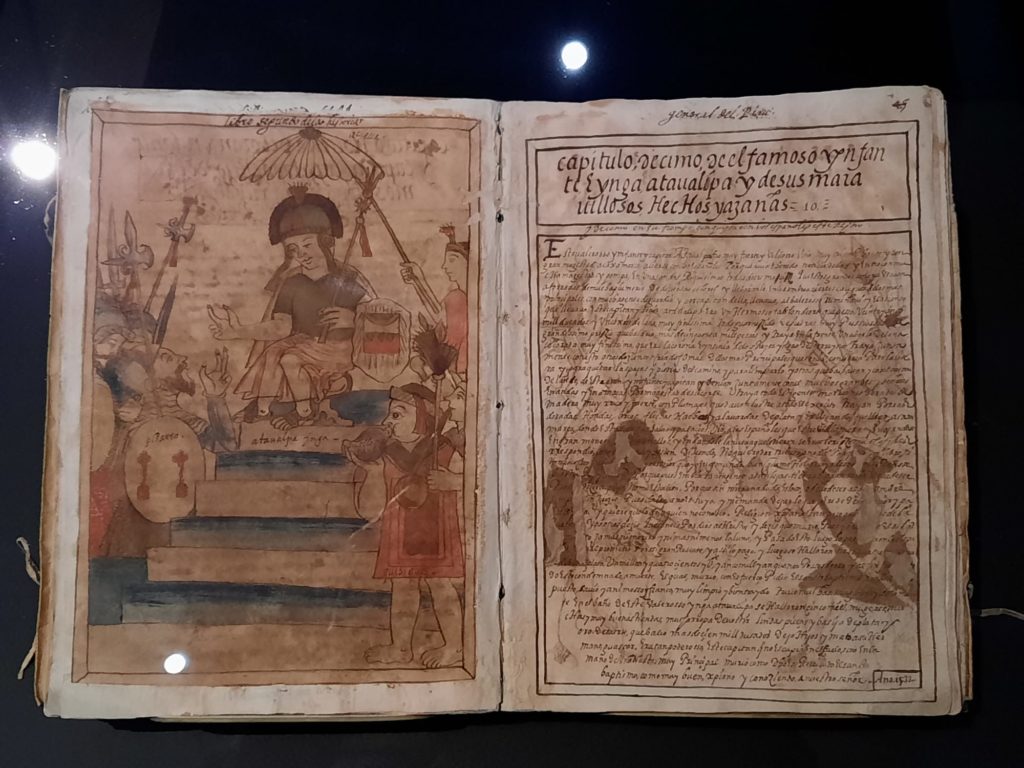
2 thoughts on “Peru: A Journey In Time – British Museum, London”